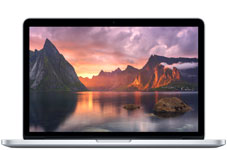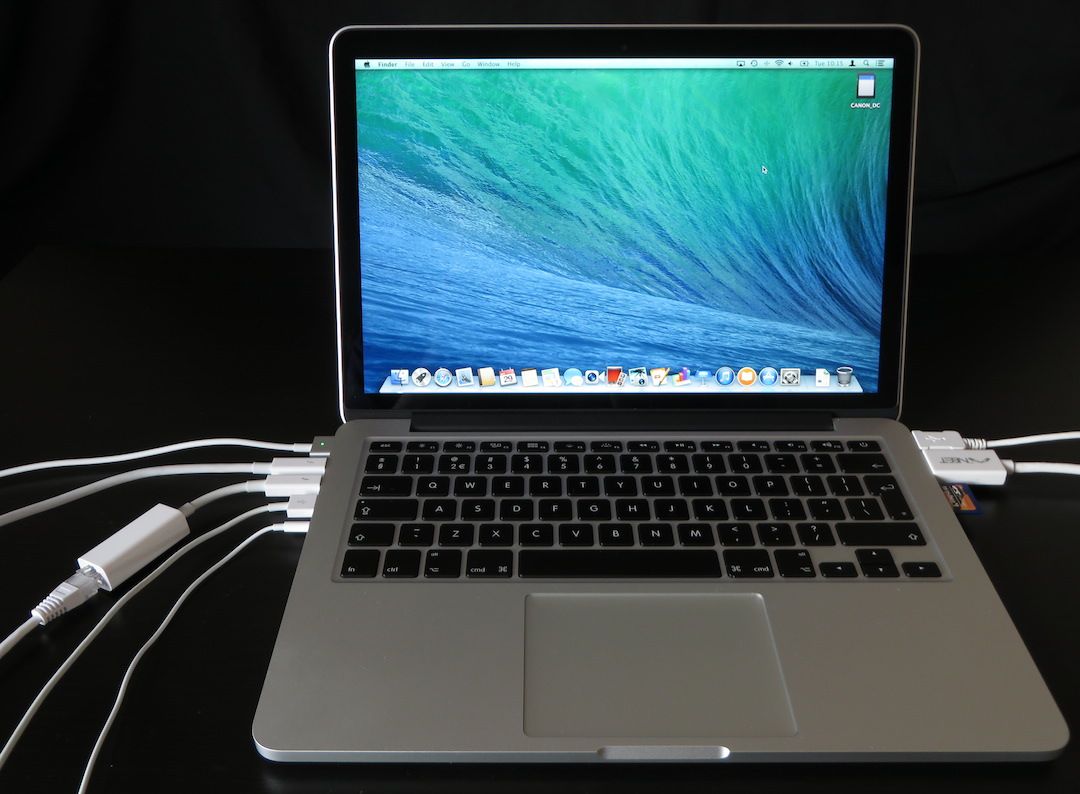

The keyboard and trackpad remain essentially the same as seen on the last several generations of MacBook. The 15-inch MacBook Pro isn't exactly a carry-all-day-every-day package, although one could tote it around to and from work, or on day trips without much trouble. This laptop is slim, but with an expansive footprint, and it feels denser than it looks at first glance. The exterior design of the MacBook Pro remains unchanged since the 2013 model we reviewed (and essentially unchanged from the 2012 original, as well), so much of the analysis we wrote for the previous model remains unchanged. Unlike the higher-end models we've reviewed in previous years, this Pro doesn't have a discrete Nvidia graphics card, relying instead on Intel's integrated Iris Pro graphics.

The model we're testing here is the entry-level (to stretch the term) 15-inch Pro, which starts at $1,999 (£1,599, AU$2,499 RRP) and includes the aforementioned 2.2GHz Core i7 CPU, 16GB of RAM, and 256GB of SSD storage. Both of those models also received a slightly faster CPU, with the 15-inch model reviewed here going from a 2.0GHz Intel Core i7 to a 2.2GHz Core i7, but still from the same generation of Intel Core i-series processors (newer CPUs are expected from Intel late this year).įurther, the higher-end 15-inch Retina Pro, the base model we reviewed in each of the past two years, dropped its price by $100, down to $2,499 and the lone non-Retina MacBook Pro, the positively ancient 13-inch model with an optical drive and relatively paltry 1,280x800-pixel display, also dropped its price by $100, down to $1,099. The entry-level 13-inch and 15-inch Retina models each doubled the included RAM, from 4GB to 8GB for the 13-inch, and 8GB to 16GB for the 15-inch.


 0 kommentar(er)
0 kommentar(er)
